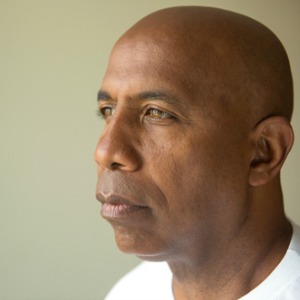Other Issues We Treat
 ADOLESCENT BEHAVIOR PROBLEMS
ADOLESCENT BEHAVIOR PROBLEMS
At the onset of adolescence many kids exhibit a dramatic change in behavior around their parents. They begin to separate from Mom and Dad and to become more independent. At the same time, kids this age are increasingly aware of how others, especially their peers, see them and are desperately trying to fit in.
Kids often start “trying on” different looks and identities, and they become acutely aware of how they differ from their peers, which can result in episodes of distress and conflict with parents. A certain amount of change may be normal during the teen years, but too drastic or long-lasting a switch in personality or behavior may signal real trouble — the kind that needs professional help.
Watch for one or more of these warning signs:
- extreme weight gain or loss
- sleep problems
- rapid, drastic changes in personality
- sudden change in friends
- skipping school continually
- falling grades
- talk or even jokes about suicide
- signs of tobacco, alcohol, or drug use
- run-ins with the law
Any other inappropriate behavior that lasts for more than 6 weeks can be a sign of underlying trouble, too. You may expect a glitch or two in your teen’s behavior or grades during this time, but your A/B student shouldn’t suddenly be failing, and your normally outgoing kid shouldn’t suddenly become constantly withdrawn.
 ADULT ADHD
ADULT ADHD
Most children with ADHD don’t outgrow their disorders; rather, they become disorganized, inattentive adults. If you’re an adult with ADHD, your symptoms may be holding you back at work, impacting your relationships, and keeping you from accomplishing your goals. Happily, once you recognize the signs and symptoms of adult ADHD, you can begin to address your areas of weakness and make your strengths work for you.
Many people have a stereotypical picture in their head of what someone with attention deficit disorder looks like: hyperactive, loud, a whirlwind of energy and unchecked impulses. And let’s face it: it’s probably a kid they’re picturing in their mind’s eye. However, ADHD is not just a childhood disorder.
Adults with ADHD struggle daily with self-regulation: regulating their attention, regulating their impulses in talking and action, and regulating their emotions. If you have trouble staying focused, getting organized, starting and completing your work, managing your time and money, and remembering all the little things in your daily life, you may very well be one of these people.
The chaos of living with unrecognized and untreated ADHD can take its toll: never-ending to-do lists, the stress of missed deadlines and forgotten appointments, aggravated friends and family members who just don’t understand why you can’t pull it together and self-recrimination over your lack of accomplishments.
The good news: life doesn’t have to be this way. Treatment can go a long way toward getting ADHD in check.
 CHILD ADHD
CHILD ADHD
Now and again, every child gets restless or absent-minded. It’s normal for children to occasionally forget their homework, daydream during class, act without thinking, or get fidgety at the dinner table. But inattention, impulsivity, and hyperactivity are also signs of ADHD. ADHD can lead to problems at home and school, and affect your child’s ability to learn and get along with others. So it’s important to know what the signs and symptoms are and get help if you spot them in your child.
You know these kids: the ones who can’t sit still, who never seem to listen, who don’t follow instructions no matter how clearly you present them, who blurt out inappropriate comments at inappropriate times. Sometimes these children are labeled as troublemakers, or criticized for being lazy and undisciplined. But the correct label may very well be ADHD.
Attention-deficit hyperactivity disorder (ADHD) is a chronic disorder that appears in early childhood. ADHD makes it difficult for people to inhibit their spontaneous responses—responses that can involve everything from movement to speech and attentiveness. The National Institute of Mental Health estimates that between 3 and 5 percent of children in the United States have ADHD. This means that in a classroom of 25 to 30 children, at least one is likely to have ADHD.
ADHD can cause many problems if left untreated. Children with ADHD may struggle in school, get into frequent trouble, and find it hard to make friends. They may develop low self-esteem as a result of failures, frustrations, and criticism. Their symptoms can also lead to friction and stress for the whole family. But treatment can make a dramatic difference. With the right support, your child can overcome the obstacles of ADHD and get on track for success in all areas of life.
 GAY / LESBIAN / BISEXUAL / TRANSGENDER ISSUES
GAY / LESBIAN / BISEXUAL / TRANSGENDER ISSUES
The concept of sexual orientation refers to more than sexual behavior. It includes feelings as well as identity. Some individuals may identify themselves as gay, lesbian, or bisexual without engaging in any sexual activity. Some people believe that sexual orientation is innate and fixed; however, sexual orientation develops across a person’s lifetime. Individuals maybe become aware at different points in their lives that they are heterosexual, gay, lesbian, or bisexual.
No one knows exactly how sexual orientation and gender identity is determined. However, experts agree that it is a complicated matter of genetics, biology, psychological and social factors. For most people, sexual orientation and gender identity are shaped at any early age. While research has not determined a cause, homosexuality and gender variance are not the result of any one factor like parenting or past experiences. It is never anyone’s “fault” if they or their loved one grows up to be GLBT (Gay/Lesbian/Bisexual/Transgender). Regardless of cause, GLBT people deserve equal rights and to be treated fairly. Homosexuality is not an illness or a disorder, a fact that is agreed upon by both the American Psychological Association and the American Psychiatric Association.
Some people say that they have “felt different” or knew they were attracted to people of the same sex from the time they were very young. Some transgender people talk about feeling from an early age that their gender identity did not match parental and social expectations. Others do not figure out their sexual orientation or gender identity until they are adolescents or adults. Often it can take a while for people to put a label to their feelings, or people’s feelings may change over time.
Understanding our sexuality and gender can be a lifelong process, and people shouldn’t worry about labeling themselves right away. However, with positive images of GLBT people more readily available, it is becoming easier for people to identify their feelings and come out at earlier ages. People don’t have to be sexually active to know their sexual orientation – feelings and emotions are as much a part of one’s identity. Therapy can be useful when going through this process of self-understanding, as well as any other issues an individual may encounter related to their sexuality.
 LIFE TRANSITIONS
LIFE TRANSITIONS
Life is made up of beginnings and endings. Life transitions are what take place as we go from the end of something to the beginning of something else. These transitions can be challenging because they force us to let go of the familiar and face the future with a feeling of vulnerability.
A life transition can be positive or negative, planned or unexpected. Some transitions happen without warning, and they may be quite dramatic, as in cases of accidents, death, divorce, job loss, or serious illness. Other life transitions come from positive experiences such as getting married, going away to college, starting a new job, moving to a new city, or giving birth to a child. Even though events like these are usually planned and anticipated, they can be just as life-altering as the unexpected events. Whether positive or negative, life transitions cause us to leave behind the familiar and force us to adjust to new ways of living, at least temporarily. They can leave us feeling completely unprepared and we may be thrown into a personal crisis, feeling shocked, angry, sad, and withdrawn.
 SELF-ESTEEM
SELF-ESTEEM
Low self-esteem can lead to depression, unhappiness, insecurity, and low self-confidence. Building your self-esteem is the beginning of moving towards happiness and a better life. If you have low self-esteem it will be impossible for you to reach your full potential and will affect both your personal and professional life.
People with normal self-esteem might doubt themselves from time to time but their sense of self worth consistently reverts to a balanced state. Having healthy self-esteem does not mean feeling perfect. It is just not being continually plagued by self doubt. Having normal self-esteem means not being excessively high one minute and feeling completely worthless the next.
People who have an OK level of self-esteem are:
- Confident without being overbearing
- Not devastated by criticism
- Not overly defensive when questioned
- Active and achievement oriented without being driven
- Mostly happy with themselves as they are
- Not easily defeated by setbacks and obstacles
They are also:
- Able to accept and learn from their own mistakes
- Unlikely to feel a need to put others down
- Open and assertive in communicating their needs
- Self reliant and resourceful without refusing help
- Not overly worried about failing or looking foolish
- Not harshly or destructively critical of themselves
- Not aggressively driven to prove themselves – people with normal self-esteem are happy with themselves as they are
- Able to laugh at themselves, not taking themselves too seriously
SOURCE: www.leadersdirect.com, Author: Mitch McCrimmon, Ph.D.
 SELF-INJURY
SELF-INJURY
Self-injury, self-inflicted violence, self-injurious behavior or self-mutilation is defined as a deliberate, intentional injury to one’s own body that causes tissue damage or leaves marks for more than a few minutes which is done to cope with an overwhelming or distressing situation. The number of young people who participate in acts of self-mutilation is growing. Although self-harm is rarely a suicidal act, it must be taken seriously because accidental deaths do occur. It’s difficult to see the light at the end of the tunnel but breaking the cycle of self-abuse is possible if you reach out to someone you trust. Finding new ways of coping with your feelings can help to tone down the intense urges you feel which results in you hurting yourself. Recovery is a continuous process and learning how to stop this addictive behavior is within your reach if you work at it.
The most common self-injurious behaviors are:
- Cutting – involves making cuts or scratches on your body with any sharp object, including knives, needles, razor blades or even fingernails. The arms, legs and front of the torso are most commonly cut because they are easily reached and easily hidden under clothing
- Branding – burning self with a hot object, Friction burn – rubbing a pencil eraser on your skin
- Picking at skin or re-opening wounds (dermatillomania) – is an impulse control disorder characterized by the repeated urge to pick at one’s own skin, often to the extent that damage is caused which relieves stress or is gratifying
- Hair-pulling (trichotillomania) – is an impulse control disorder which at times seems to resemble a habit, an addiction, or an obsessive-compulsive disorder. The person has an irresistible urge to pull out hair from any part of their body. Hair pulling from the scalp often leaves patchy bald spots on their head which they hide by wearing hats, scarves and wigs. Abnormal levels of serotonin or dopamine may play a role in this disorder. The combined treatment of using an anti-depressant such as Anafranil and cognitive behavioral therapy (CBT) has been effective in treating this disorder. CBT teaches you to become more aware of when you’re pulling, helps you identify your pulling habits, and teaches you about what emotions and triggers are involved in hair pulling. When you gain awareness of pulling, you can learn to substitute healthier behaviors instead.
- Hitting (with hammer or other object), Bone breaking, Punching, Head-banging (more often seen with autism or severe mental retardation)
- Multiple piercing or tattooing – may also be a type of self-injury, especially if pain or stress relief is a factor
- Drinking harmful chemicals
Even though it is possible that a self-inflicted injury may result in death, self-injury is usually not suicidal behavior. The person who self-injures may not recognize the connection, but this act usually occurs after an overwhelming or distressing experience and is a result of not having learned how to identify or express difficult feelings in a healthy way. Sometimes the person who deliberately harms themselves thinks that if they feel the pain on the outside instead of feeling it on the inside, the injuries will be seen, which then perhaps gives them a fighting chance to heal. They may also believe that the wounds, which are now physical evidence, proves their emotional pain is real. Although the physical pain they experience may be the catalyst that releases the emotional pain, the relief they feel is temporary. These coping mechanisms in essence are faulty because the pain eventually returns without any permanent healing taking place.
Self-harm serves a function for the person who does it. If you can figure out what function the self-injury is serving then you can learn other ways to get those needs met which will reduce your desire to hurt yourself.
Reprinted with permission from http://www.helpguide.org/. C 2008 Helpguide.org. All rights reserved.
SOURCES: www.helpguide.org, www.pflag.com


